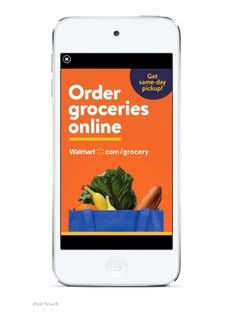By Stephen Freitas, Chief Marketing Officer, Outdoor Advertising Association of AmericaOver the past several years, there has been a flood of new technologies transforming the out of home (OOH) industry, resulting in major shifts to nearly every aspect of the business.

Cameras were mounted onto bus shelters so pedestrians could interact with Monterey Bay Aquarium digital OOH ads.
The transformation began a few years ago with the development of high-quality, high-definition digital display technology. The integration of information used to draw insights from huge data sets followed. OOH continues to innovate as industry leaders consider how the newest technological advances may impact the business in positive ways, many not yet imagined. Some of the fascinating opportunities on the horizon include driverless cars, trucks, and buses; flying drone delivery and drone marketing; hyper-loops and high-speed rail; hover-boards and electric vehicles; augmented reality and virtual reality; additive manufacturing; and 3D printing. Some of these advances may impact the OOH industry directly or indirectly.
A Need for Scale
The expansion of technological implementation requires resilience at scale and information that is transparent. The convergence of data with real-world applications requires that networks are capable of scaling exponentially while remaining manageable and stable. There are several ways to address scale as information and the insights it produces continues to expand.
Gazing Through the Fog Layer: The sheer amount of data used today for analyzing OOH audiences, coupled with the rapid speed with which decisions need to be made, mandates computing capability that is closer to the source of the data. Applied to OOH, this can make it possible for real-time data to be quickly filtered and analyzed, and then transformed into actionable intelligence for campaigns. Placing computing power closer to the source, coined as the “fog” layer, is distinct from the cloud. Using this approach, OOH can better prove the size and scope of near real-time audiences exposed to ads.
Moving Tribes and Learning their Habits: Real-time transit data is another opportunity being explored by the OOH industry, to incorporate route-planning capabilities into applications. Fostering the development of advanced tools that governments are now utilizing, it is possible to create a win-win relationship for both OOH companies and cities, with both service and revenue opportunities, including public safety cameras, WiFi hotspots, and location-based advertising platforms.
The Internet of Things is Really a Thing: A layered approach to data use can achieve a comprehensive solution, with no single point of failure. Today, robust data collection is integrated throughout all aspects of digital implementation. With the expansion of Internet of Things (IoT) networks, individual devices or even OOH locations may serve a critical function. As much as the IoT has already begun to change cities, and to a lesser degree the ad business, the next phase might bring about big business opportunities. Technology has become pervasive.
Elevating connectivity has become a key differentiator between offline media channels and how OOH is evolving into a digital-facing platform. The idea is to provide a platform that allows for connected services, linked with connected messages, linked with consumer devices and networks.
Technological Change will be Constant
OOH remains one of the fastest growing media channels because the industry is embracing change to reach consumers where they are headed in ways that are compelling. The embrace of innovative thinking continues to transform the business in profound ways and will continue as technology evolves. This includes several near-edge advances that will process more data more quickly.
More Data: Advanced data-analytics is evolving quickly due to an increasingly affordable suite of platforms and tools, translating to meaningful messages for consumers who want relevant information presented in near real-time when standing in front of an OOH location.

- For the Emoji Movie, atmospheric triggers were used to change OOH messages based on current weather conditions.
- OOH and the Convergence with Mobile
Even when consumers have their attention focused elsewhere, OOH is finding ways to effectively communicate and interact with them in a customized fashion. This includes linkage with mobile in new ways.
Gazing Down the Street: Advances in tracking technology improves OOH data collection. One new approach is 3D camera “gaze tracking.” OOH locations can have different zones, and each one of these zones can show different content. With the assistance of a 3D counter, OOH companies can calculate where a viewer is looking and then cross tabulate the knowledge with mobile data. As each consumer views a particular ad, the information is captured and inserted into a completion report for the client.
An Emotional Buy: Emotion detection is also possible when viewers stand in front of an OOH location. Are they happy? Are they sad? A 3D camera can make that analysis, and it all provides better insights about consumers and how they interact with ads.
OOH is the Real Thing
The fact is clear, while digital is attractive for many reasons, all OOH units must still connect to the physical world. This is where OOH has the upper hand over digital and mobile platforms. The real world is where drivers (and their passengers) pass billboards, where hungry commuters stand at bus shelters, where busy commuters wait for trains, where all of us actually live, work, play, and learn.

Walmart utilized real-time data to identify shopper mom's and which digital OOH locations they passed. By geofencing the OOH locations, the mobile component provided further information after exposure to OOH.
OOH is using leading-edge technology to strengthen bonds between brands and consumers, to improve targeting and ROI analysis, and to stay ahead of where consumers are heading. With connected networks and platforms, OOH is a fully integrated partner in the media planning and buying ecosystem. That is why in today’s world of clicks, likes, and page views, OOH is the real thing. It can’t be ignored, blocked, skipped, or viewed by bots. OOH advertising works 24/7/365, surrounding and immersing consumers with real, powerful, advertising wherever they live, work, travel, shop, and play. It’s real, powerful advertising.
Author Stephen Freitas will present Session 30 entitled, “How Digital Data and Innovation are Making OOH a Core Media Buy,” at Digital Signage Expo 2018 on Thursday, March 29 at 2 p.m. at the Las Vegas Convention Center. For more information on this or any educational program offered at DSE 2017 or to learn more about digital signage go to www.dse2018.com. About the Author
Stephen Freitas joined OAAA in 1999 where he is recognized as the out of home (OOH) industry’s leading marketing spokesman and thought leader, helping to advance and unite the OOH advertising industry through education and marketing. Before joining OAAA, he spent a decade developing high profile marketing programs for Clear Channel Communications and its predecessor Eller Media Company. As senior vice president of marketing, he was responsible for global branding, advertising, research, public relations, and corporate communications. Prior to joining the OOH advertising industry, he worked as a media planner at two San Francisco agencies and at Chevron, USA for eight years.










